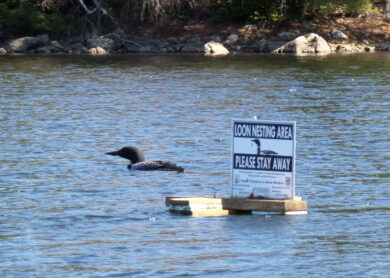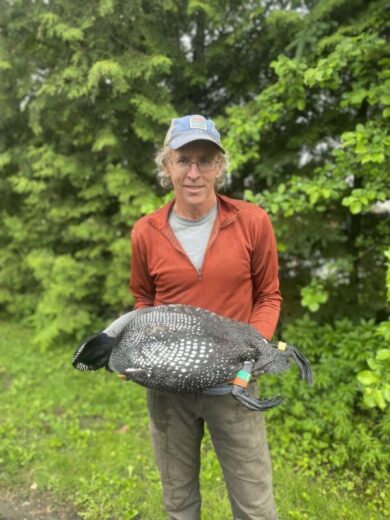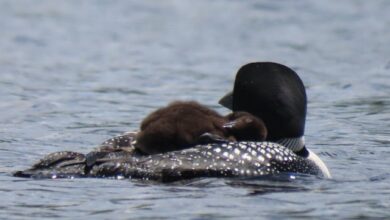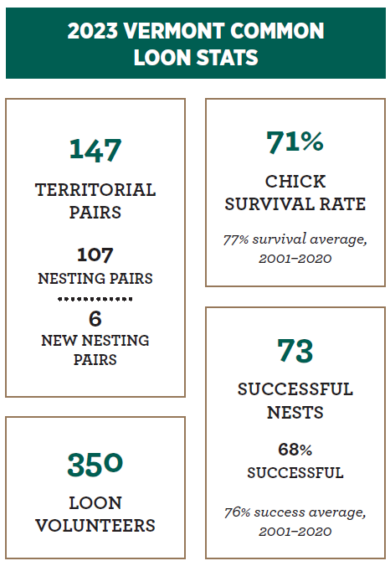Well folks, it’s that time of year, and the 2023 field season is officially behind us. What a year it was, filled with loon chick rescues, raft building, dedicated volunteers, and historic flooding throughout the state. Here is a 2023 recap of everything loon. In total, we documented 107 nesting pairs and 147 territorial pairs of loons this summer, some of the highest numbers we’ve ever recorded!

Loon on Lake Chittenden © Eric Hanson
This success becomes even more vital in light of the historic flooding that took place this summer. Because the rain came in early July, only six loon nests were inundated. VCE Loon Biologist Eric Hanson speculates that if the six-to-ten inches of rain had come a few weeks earlier, in the height of nesting season, the damage could have been much worse. With weather like this predicted to become more common, it is more important than ever to continue to monitor and manage these birds to ensure future success.

VCE loon biologist Eric Hanson holds the Newark Pond Male, the oldest known loon in VT. © Eloise Girard
Another historic event from this past summer is the sad loss of Vermont’s oldest loon, who was 31. Hanson first tagged the bird back in 1998, when loons were scarce and listed as endangered in the state. An autopsy was performed to determine the cause of death, and overall health condition, of the bird. Results indicated the cause of death was from blunt trauma, most likely caused by a collision with a boat. While this news can be discouraging, a loon living successfully for at least 25 years in the state is also a testament to conservation efforts.
Speaking of success stories, there were a number of loon rescues this summer. We have an entire blog post dedicated to the rescue and rehabilitation of two loon chicks, but there were several others. Perhaps the most interesting rescue involved a loon that was entangled in fishing gear, but also incubating a nest. The bird was still able to feed and preen but was obviously in need of help. After the chick hatched and was about 10 days old, VCE embarked on a spotlight night rescue and managed to successfully disentangle the adult bird.

Back ride at Branch Pond © Nicki Steel
This past season also marked a large expansion of our lead fishing gear collection program. VCE has successfully partnered with Vermont Fish and Wildlife to place lead sinker collection tubes at 26 lake sites throughout the state. Anyone can take old sinkers and other fishing gear to these tubes and deposit them there, free of charge. If you’re unsure what fishing tackle is safe to use, or want to learn more, check out this page on our website.
We would also like to thank all the loon volunteers and others who help us every year to keep this program up and running. Without your generosity and passion for these animals, we wouldn’t be able to have this statewide program (and all of the conservation success that comes with it).


Thank you to each and everyone of you for protecting and nurturing our loons!
Hi I wanted let you know I did find a dead loon on Chittenden Reservoir back in Sept of 22. Wasn’t sure who to contact at the time. See attached.
Steve Rooney